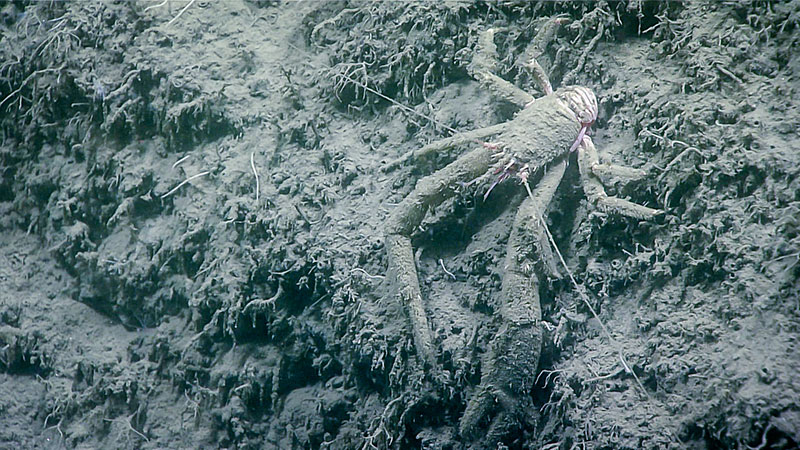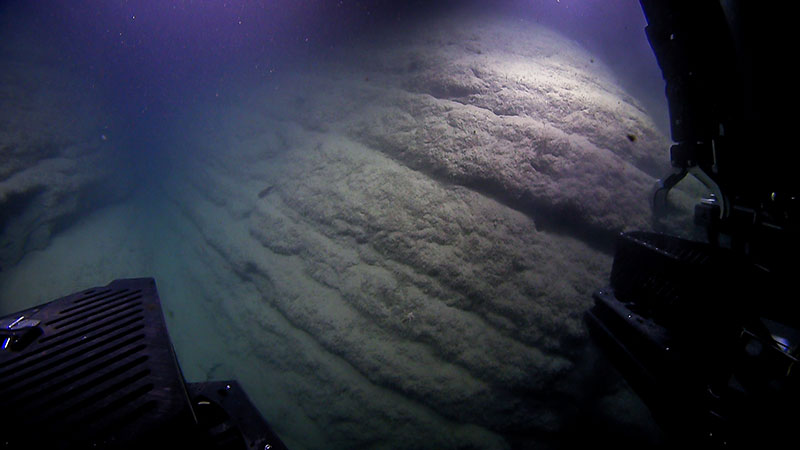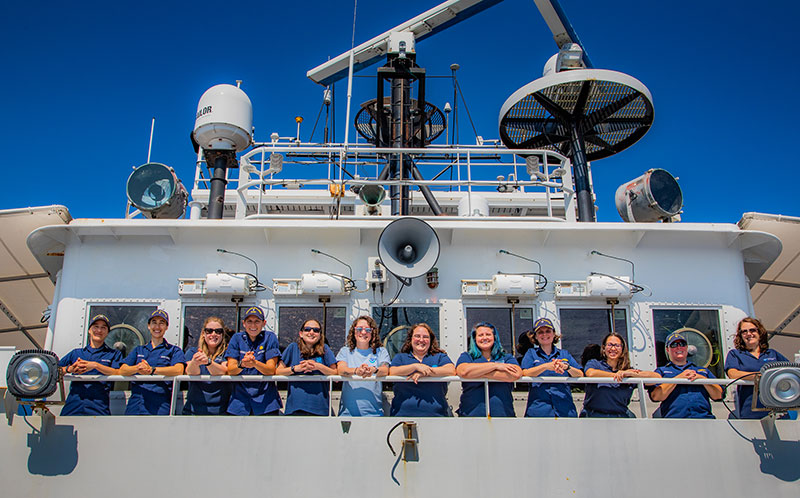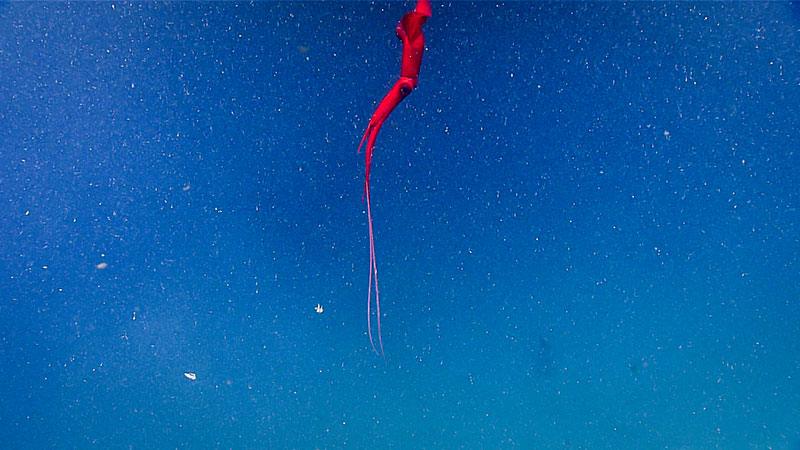
Date: July 3, 2019
Location: Lat: 35.6187°, Lon: -74.790417°
Dive Depth Range: 1,189-1,345 meters (3,900-4,413 feet)
Access Dive Summary and ROV Data

Most of today’s dive was over a soft sediment seafloor. Image courtesy of the NOAA Office of Ocean Exploration and Research, Windows to the Deep 2019. Download larger version (jpg, 2.1 MB).

The canyon walls are illuminated by the lights of Deep Discoverer. Image courtesy of the NOAA Office of Ocean Exploration and Research, Windows to the Deep 2019. Download larger version (jpg, 862 KB).
Today we faced delays due to the strong currents of the Gulf Stream, which were 3-4 knots at each of three potential sites we evaluated for today’s dive. After assessing the situation, we decided to transit north to a place we called “Dodge” Canyon, to see if we could get out of the Gulf Stream. However, once we arrived, we found heavy fishing vessel traffic, which prevented a safe launch of the remotely operated vehicle (ROV). We tried our luck at another site, moving deeper into the canyon and further away from shore, and were finally able to launch ROV Deep Discoverer around 1 pm ET, reaching to bottom a little over an hour later at a depth of 1,345 meters (4,413 feet). Fortunately, the Commanding Officer of NOAA Ship Okeanos Explorer offered to extend today’s dive, giving us enough time to characterize the seafloor.

Over 25 percent of the mission and crew team aboard NOAA Ship Okeanos Explorer for the Windows to the Deep 2019 expedition are women, including the Commanding Office (CO), Executive Officer (XO), Operations Officer (OPS), Expedition Coordinator, Mapping Lead, and Science Leads! This is the first time this has happened onboard the Okeanos Explorer, and is a rarity amongst oceanographic research vessels. Image courtesy of the NOAA Office of Ocean Exploration and Research, Windows to the Deep 2019. Download larger version (jpg, 4.4 MB).
During exploration of a site we dubbed Deep "Dodge" Canyon, we encountered a rock that appeared to be authigenic carbonate with bacterial mats growing on it. These mats can be generated by bacteria processing methane, and thus their presence is often indicative of methane seepage in an area. While we ultimately did not observe methane bubbles or signs of chemosynthetic life during the dive, finding even a potential seepage site was surprising for scientists, as it was unexpected and we had not picked anything up in the acoustic data overnight to suggest a seep might be present. We've only been studying seeps along this margin since about 2012, so every observation lends additional clues to our understanding of the geology of this region. Video courtesy of the NOAA Office of Ocean Exploration and Research, Windows to the Deep 2019. Download larger version (mp4, 98.0 MB).
The water column on the descent contained a large amount of marine snow, so visibility was lower than we have previously experienced on this expedition. The bottom was very soft and silty, with many eelpouts and cusk eels. As we moved towards the canyon wall, we encountered a potential cold seep site with bacterial mats on potential authigenic carbonate, but there were no bubbles visible. The entirety of the canyon wall was very steep, but covered in soft sediment. We observed a number of shrimp, shortfin squid, and Atlantic red crab. A particular highlight was a beautiful, deep-red Magnoteuthis magna squid, drifting along the water column against a background of white marine snow and blue water – a surprising rush of patriotic colors fitting for the day before Independence Day! This species is quite common below 1,000 meters (3,280 feet) along the Northeastern coast of the United States and feeds by extending its two long tentacles as it drifts along with the current.

Red, white, and blue: A squid (Magnoteuthis magna), common below 1,000 meters (3,280 feet) along the Northeastern coast of the United States, drifts along in the water column. Image courtesy of the NOAA Office of Ocean Exploration and Research, Windows to the Deep 2019. Download larger version (jpg, 1.9 MB).

Location of Dive 11 on July 3, 2019. Download larger version (jpg, 2.1 MB).

The remotely operated vehicle track for Dive 11, shown as an orange line with a white curtain. Scale is water depth in meters. Download larger version (jpg, 5.8 MB).